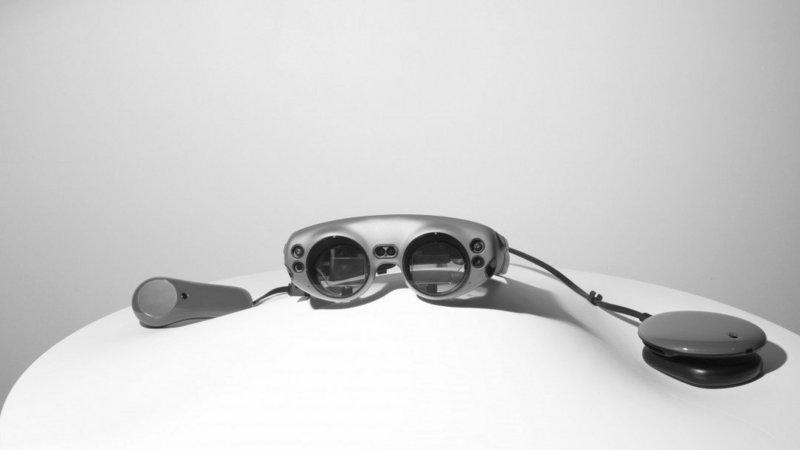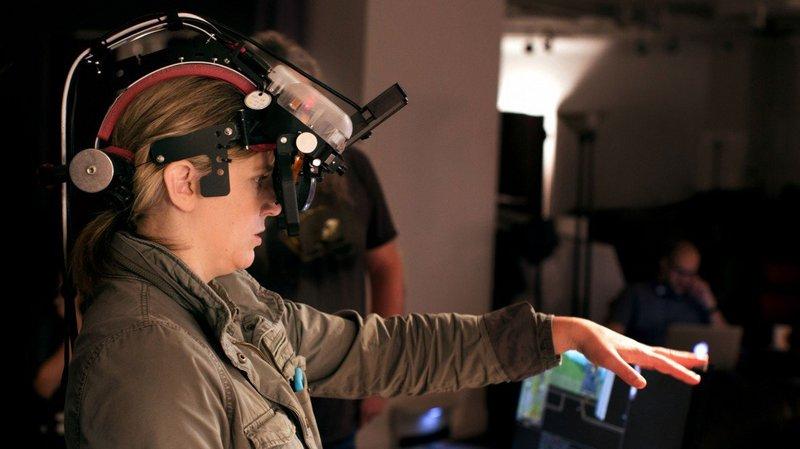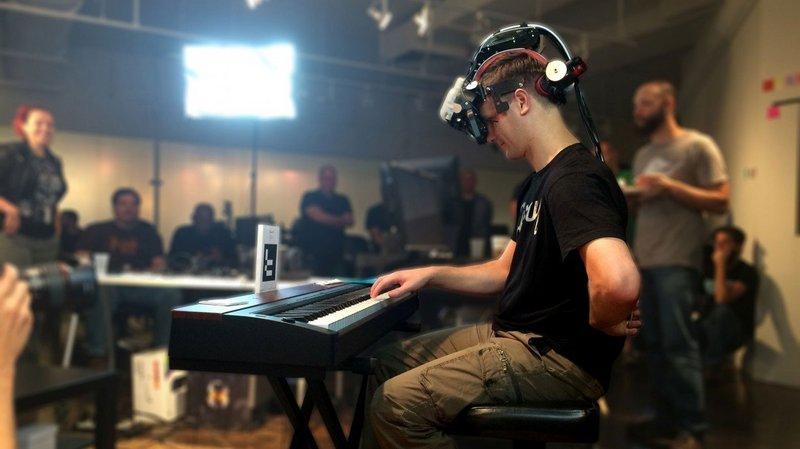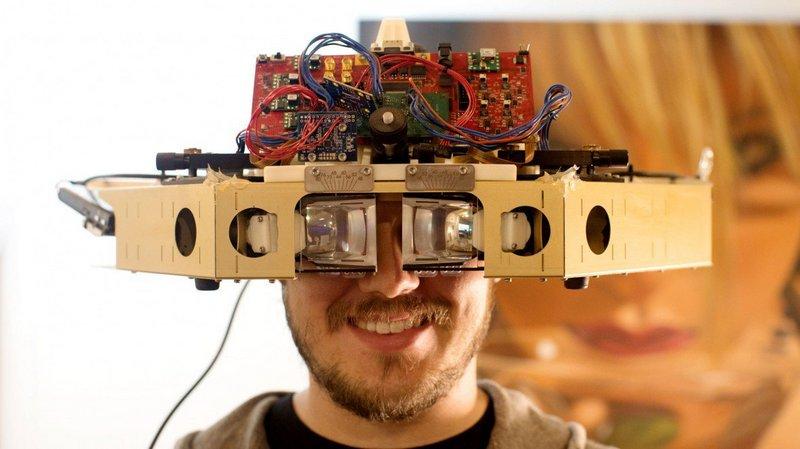Editor's Note: This article is authorized to be compiled from an article originally titled "MAGIC LEAP’S HEADSET IS REAL, BUT THAT MAY NOT BE ENOUGH" by MIT Tech Review
In an ordinary building in Plantation, Florida, Magic Leap has developed a device that's real and cool enough to combine 3D virtual images with reality in a way that's better than any other AR or VR headset I've seen All good.
Now the question is: what are people going to do with this helmet?
Magic Leap hopes that developers and other creative types will emerge to provide answers soon. More recently, Magic Leap started selling a long-awaited headset, a bit of goggle, called the Magic Leap One.
Note that this helmet is not intended for civilian use. First, you must register in the name of a developer. Magic Leap hopes to build a developer community that will allow them to develop apps for the headset, just like developers develop products for mobile phones. The headset is priced at $2,295. Microsoft's HoloLens headset, also aimed at developers, costs $3,000 or $5,000. If you want to apply, you must be 18 years old. When it was first launched, the product could only be mailed to a few cities in the United States, such as New York and Seattle. If those obstacles are no obstacle in front of you, you will receive the helmet, a wearable computer that connects to the helmet, and a one-handed controller. The device is equipped with a rechargeable battery with a battery life of up to 3 hours.
Since 2011, Magic Leap CEO Rony Abovitz and others on the team have been developing products, and Magic Leap One is the culmination of all efforts. Previously, Magic Leap had shown some dazzling images, such as letting a whale jump out of the gymnasium floor and holding a baby elephant in the palm of your hand. These promotional videos tell us that the product can integrate digital images with the real world and arouse users' curiosity Heart. For Magic Leap, the new headset is an opportunity to prove that the hype is true.

The Magic Leap One connects to a small wearable computer and is controlled with an accompanying handheld controller. In many ways it is. I visited Magic Leap last month to try out the headset, and I saw a turtle swimming around the room with tiny air bubbles behind its tail that jumped out of the way when I poked it. I also picked up the ray gun and fought back the alien robots that poured out of the gates in the walls. Overall, visual images were fairly clear and vivid, and I was sometimes able to see several digital images at the same time, at different depths.
When I first visited Magic Leap in late 2014 and saw a prototype, the Magic Leap One was much smaller and more portable than the early prototypes. At that time, I saw a huge device, like a stand, and from the fixed lens, I saw an extremely realistic blue monster. There is also a small device, like a shopping cart, which is not portable. Through this small device, I can see a flying robot, which is full of steampunk flavor, and I can poke it with my hand. Even so, I'm surprised MIT Technology Review named its technology one of the top 10 technological breakthroughs of 2015.
The company has raised $2.3 billion, and Magic Leap has applied for hundreds of patents on how to project digital images into the real world, and dozens of patents have been approved. But Magic Leap is full of secrets and exaggerated marketing hype, so many developers and technology consumers think that Magic Leap products are a bit like vaporware.
In 2015, Magic Leap released a video on YouTube called "Just another day in the office" (Just another day in the office), in which we saw a robot fall out of a door in the ceiling. According to the company, this is a game that company employees are currently playing in their offices. In fact, the video is somewhat similar to something I saw a few months ago, when the company told me it was just a game trailer. On the YouTube platform alone, 4 million people have watched the video. Later, the video was renamed "Original Concept Video". In a recent Twitch livestream, Magic Leap showed off the Magic Leap One again, and we saw the little monster throwing rocks, which was a bit of a bad experience, and people laughed at it as a result.

This summer, when Magic Leap invited me to try out the Magic Leap One in Florida, the product was about to be released to the public, and I figured the image I was seeing must be blurry and terrible. After two experiences, I've changed my mind and think the Magic Leap One is the best AR headset out there.
Yes, while Magic Leap has done a lot of things that people thought it couldn't, there's still a daunting task ahead: convincing developers to create compelling content for the new form of computing that most people will Say, this form of computing is so new that you don't even know it exists; let alone convincing developers of what the technology is good for. Figuring this out is not easy. It seems to me that Magic Leap hasn't figured it out yet.
Abovitz is a bit tired, but happy. Last night, he worked until 2 a.m., putting the finishing touches on the Magic Leap One. He sits in the glass-walled office in the middle of his Plantation, Florida, office, about 10 miles from Fort Lauderdale Beach.
Behind the Abovitz are shelves filled with toys, ray guns, a portrait of rocker Jimi Hendrix, IKEA night lights, and books like "Making Tough Decisions" and "Graphics for Engineers." On the corner of the shelf there is a small box with statues inside, like pink, green monsters, dinosaurs. There's also a Thwaxo's Space Fudge box next to it, which is the equivalent of a souvenir. In 2012, Abovitz participated in the TedX event in Sarasota, Florida, and gave a speech. When he took the stage, a Thwaxo’s Space Fudge box was placed in the center, two monsters jumped around the box, and he walked out in a space suit.
What happened at Magic Leap since the last time we met? That's what he wanted to tell me. If life were TV, he said, visiting Magic Leap in late 2014 was the equivalent of Pilot Season, now in its fourth season. He walks me through the slides and tells me how the prototypes have evolved over the years, from ones I saw that were big (nicknamed The Bench) to smaller ones. It's clear that Abovitz wanted to convey a message: The company spent many years developing prototypes and optimizing various components that culminated in the Magic Leap One.

How do digital images blend perfectly with the real world? The company did not give a clear explanation. Essentially, the company puts the chip inside the helmet lens, and the light passes through the transparent chip, which sends the light directly onto the eye. This allows the headset to generate the illusion of a digital simulation of a light field, where light travels in every direction within a certain volume, and you can see objects in the space around you, floating in the air. With the Magci Leap One, users can view sharp 3D images up close, Abovitz said, with a field of visual light that starts as close as 14.6 inches from the face and extends into the distance. It should look natural.
We chatted and looked at the many machines that Magic Leap uses to make transparent wafers. Abovitz then leads me down the hall to a room with white glass doors. The room was like a stylish living room, with a leather sofa, side tables, bookshelves, and ottomans. In short, it is well furnished and feels like a part of the house.
On the other side is a table with several Magic Leap One headsets. Shanna De luliis, Magic Leap's director of technical marketing, showed me how to put the helmet on: First, remove the headband, put it on your head, make sure the angle is correct, and then tighten it. Wearing a helmet is like wearing sunglasses indoors. Abovitz explained that the helmet design chose a dark color, mainly to make the helmet look strong enough, and did not want the light emitted by the product to be too bright and irritate the eyes. The helmet isn't designed with glasses in mind, and if you wear them, you can hide them underneath; if you wear prescription glasses, you can buy custom lenses, custom-made to fit your eyes, the company says.
I was wearing a skirt with no pockets, so I had to attach my circular connected Lightpack computer to a strap that wrapped around my shoulder. The Lightpack computer does the processing and renders the image. Magic Leap calls the helmet Lightwear, and it weighs 325 grams, while the Lightpack weighs 415 grams. Wear it on your head like a pair of ski goggles, attached to a fairly light wallet. Shanna De luliis hands me the black controller, with a touchpad on the top and triggers below.
I played with some demos, which either came pre-installed on the Magic Leap One, or were placed in Magic Leap World, which is Magic Leap's program store. The first demo was a game called "Dr. Grordbort's Invaders," which was playable, but wasn't available when the Magic Leap One originally launched.
When the game starts, a rectangular door opens on the front wall. The black alien robot came out and shot me. I dodged the fire and countered with the controller in my hand. At this point, there will be a layer of digital image overlaid on top of the real world. It is a red ray gun, which looks a bit retro. If I hit a wall or furniture, or whatever, there's a black blotch on it. The experience reminded me of the video a few years ago, that is, the video of "playing games in the office", but this time we can really play the game in the office. Magic Leap showed demos on Twitch, and the demos at the time were pretty bad, and the demos I see now are completely different.
When I hit the robot, the robot fell to the ground. I stand on a robot and examine the "wreckage": it looks pretty solid. Abovitz once told me that if you want to know what he's developed, you'd better try it yourself, and he was right: the robots (and most of the other things I looked at) looked a lot better in a headset than on a flat-screen monitor Much better to watch online.
How to integrate digital images with reality, Magic Leap seems to have made great progress. One of the big challenges in AR is having artificial objects block real objects and vice versa; it's hard to do because you have to control the lighting very precisely. From the demos I've seen, the company is doing well, most of the time. Occasionally, droids will emerge from behind the sofa in the room, and if you can't find them quickly, speakers inside the helmet will help you figure out where they are. When I crouched behind the chair to see if they would disappear, the robot image seemed to bend a bit, coming towards me rather than being blocked by the furniture.
Another demo product is the NBA App, in which you can watch a basketball game on a flat screen, and I can use the controller to move or adjust the screen. I hung the screen on the wall and the image was clear, except when viewed up close. When you are about 6 inches away from the image, the image disappears, replaced by grid lines. There is also a "Court View" function inside. After enabling it, you will see a desktop-sized 3D basketball court. I let it float on the floor in front and saw the computer generated LeBron James shoot the ball.

There is also an App called Create, with which, you can build your own AR world through the helmet and controller. I can grab little things like a T-Rex, a knight, a turtle and place them in a realistic environment. I grab a T-Rex, it growls, and I put the T-Rex on a stool. The tyrannosaurus rolls over and then stands up, quite realistically, on the fabric surface. I put the 3D knight next to the T-Rex, and the T-Rex crushed him mercilessly.
I dragged a turtle and put it in the air, and it swam leisurely. When I tap it, it responds to my hand movements, and even feels a bounce if I poke it with the controller. I let the forest grow on the furniture, on the floor. I picked up a virtual crayon and scribbled on top of Abovitz's head, who was standing across the room, and soon my drawing covered it.
At a certain point, the vision will pop up an error message. Apparently you can't add anything anymore as there's so much stuff that the helmet can't take it I just had to delete some before I could add it again.
Abovitz joked: "You broke it down."
Helmets have other problems as well. While the picture looks sharp and stays still when I shake my head, it sometimes breaks down into red, green, and blue when I move. Sam Miller, co-founder and co-director of the Magic Leap systems engineering team, said the problem arises mainly because different parts of the hardware and software have to work together.
Field of view may be a bigger issue. That's true for Magic Leap, and it's true for other companies that want to blend reality with digital imagery. The Magic Leap One has a diagonal viewing angle of 50 degrees, and the HoloLens only has 35 degrees, but it's still not big enough to see the entire TV when you're a few feet away from the virtual flat-screen TV, not too close. The field of view of VR helmets is larger than that of Magic Leap products. It is difficult to expand the field of view of AR, but it is easier for VR. Jeremy Bailenson, founding director of the Stanford Virtual Human-Computer Interaction Lab, explained that unlike VR, which puts the screen in front of your eyes, AR emits light, bounces off a surface, and enters the retina.
I met some employees at Magic Leap and they were excited. Some employees have been developing products for the past few years. What we saw in the demo room was fun and visually stunning, but not really addictive.
I wish I could actually feel the robot firing at me. I want the whales to jump out of the gym and be as big as real fish. I wish I could forget about the helmet on my head and the computer on my body and gaze out into the augmented world. The hardware has to be smaller and better if it's going to get there.
The Magic Leap One is cool, but the question remains: Will it make money?
Abovitz has said before that the company's first product will be a consumer product, not a beta product for developers, but the Magic Leap One is clearly a development version. Now Abovitz added: "We know that we can't bypass the creators, the people who create the experience. We want to put them first." If most people want to buy products, now is not the time, not ready, regardless Whether it is technology, hardware, or experience, it is not perfect. Abovitz believes that it will only become the popular device you have always wanted to use when the fourth generation of the product is launched.

That's why Magic Leap relies on developers and partners, such as the NBA, Lucasfilm and other brands, to help it find its next stop. What does the future hold? Even Magic Leap's leader can't tell.
Rio Caraeff, Magic Leap's chief content officer, told me that Magic Leap is developing some apps for testing, and they are more about activating the curious side of users than improving enterprise productivity and medical imaging. He also said that Magic Leap definitely wants to empower developers and "put their fingerprints on the world." Aleissia Laidacker, head of engagement at Magic Leap, echoed a similar sentiment: "I hope, when the product launches, we see developers working on a lot of amazing and crazy things." In short, the company follows the strategy of letting a hundred flowers bloom. "You don't have to be a big company to be a Magic Leap developer," he added. "Kids can build experiences for us in the garage."
Unfortunately, if a child really wants to develop, he has to pay $2,295 for a helmet first.
This is a problem Magic Leap has to face. Like the VR headsets on the market, Magic Leap is looking for a "killer app." Developers may or may not find something amazing and useful on a new computing platform, and VR developers haven't had much success over the past few years.
Abovitz admits that although there are expectations for what he develops, this expectation is uncontrollable, but he has no regrets. "There can be no regrets," Abovitz said.
Produced by the compilation group. Editor: Hao Pengcheng
Articles are uploaded by users and are for non-commercial browsing only. Posted by: Lomu, please indicate the source: https://www.daogebangong.com/en/articles/detail/The%20Magic%20Leap%20headset%20is%20a%20real%20thing%20but%20the%20problem%20is%20no%20one%20will%20buy%20it.html

 支付宝扫一扫
支付宝扫一扫 
评论列表(196条)
测试